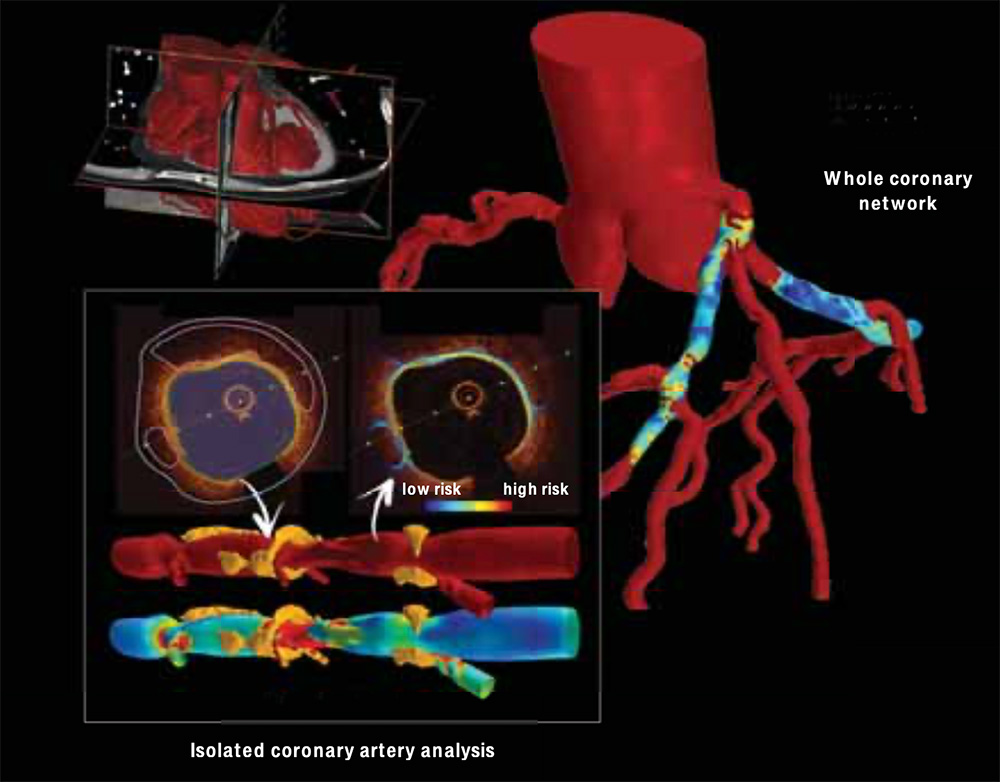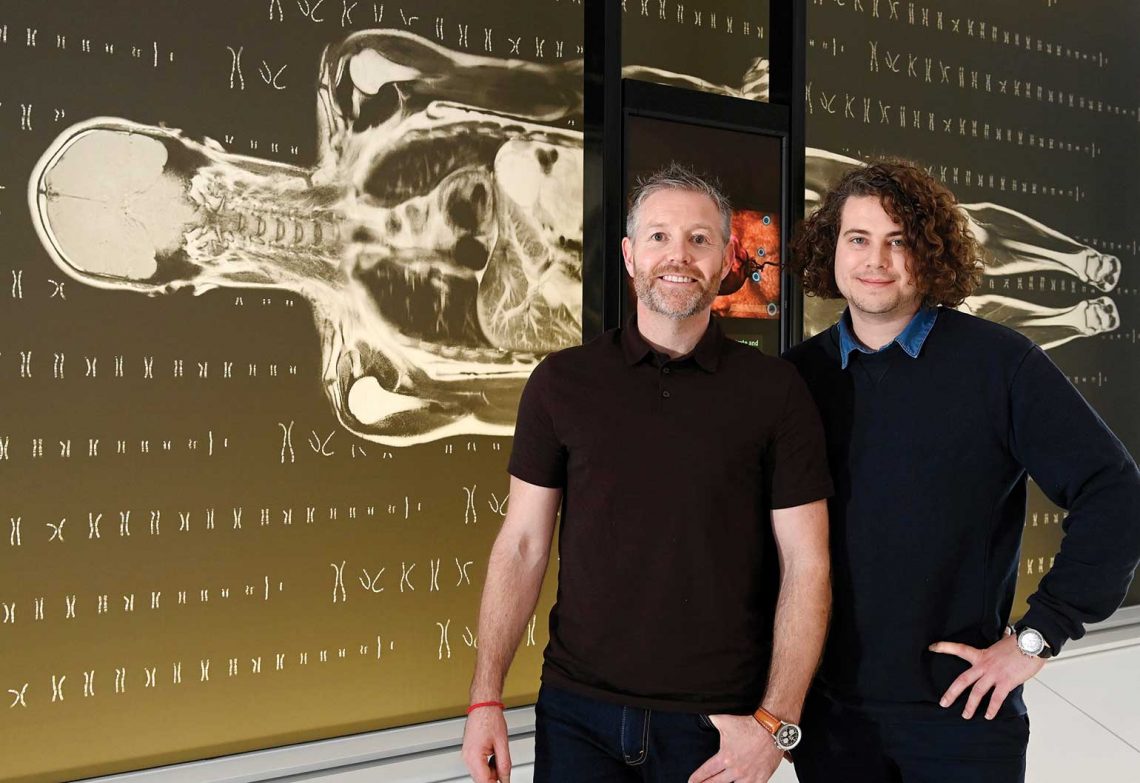A next-generation analysis tool to combat coronary artery disease is moving from the lab to hospitals around the world, thanks to Australian biomedical engineers.
An innovation from the University of Western Australia (UWA) and the Harry Perkins Institute of Medical Research is creating a path to more effective treatments for people with heart disease.
A team of biomedical engineers and cardiologists has spent the past seven years developing Apricot, a coronary artery software analysis tool that will significantly help doctors treat patients in hospital catheterisation labs.
Traditionally, cardiologists examine heart attack patients by imaging their chest cavity with a CT scan, an angiogram and, more recently, through a light-based imaging modality called optical coherence tomography (OCT).
OCT consists of an ultra-high-resolution camera attached to a guidewire delivered down the length of the artery to examine plaque build-up and blockages in arteries so the disease can be viewed from the inside out.
These techniques enable cardiologists to intervene and treat blocked arteries to save patients’ lives. However, they do little to characterise the functional impact of plaque, focusing instead on the anatomical aspects of the diseased artery.
Apricot significantly enhances the existing process by combining OCT with angiograms to create 3D reconstructions of the arteries.
The software takes these 3D reconstructions and runs specialised engineering-based simulations to characterise the biomechanical forces acting on the arteries.

Shear stress — the force of the blood rubbing against the inside lining of the artery — can inform medical staff of areas of likely plaque development and potential future risk before it is visible on medical images.
Apricot’s simulations to assess shear stress are based on computational fluid dynamics, the same type of engineering mechanics used to design everything from Formula 1 cars to oil and gas pipelines.
Apricot also runs simulations to assess structural stress in the arteries to inform doctors of areas of plaque build-up that are at risk of rupture.
The software assesses structural stress via finite element analysis (FEA) — the same engineering mechanics used to design a bridge or a building — to properly calculate force and stress.
Reducing wait times
Engineers Australia Fellow and Harry Perkins Institute Head of Vascular Engineering (VascLab) Associate Professor Barry Doyle told create the data gained from these simulations is information that cardiologists can’t access through any other commercial means.
Doyle said that once Apricot has processed the data from the simulations, it tabulates the information into a user-friendly report that cardiologists can access soon after the catheterisation procedure.
“The cardiologist will assess their patient, supply images to Apricot — which is linked to the cloud — and our algorithms will take over, conduct the analysis, and return the report to the medical team within a couple of hours while the patient is still in the hospital,” he said.
“The in-depth information provided in the report will enable the medical team to make rapid decisions about the patient’s health, which can save them from future heart attacks.
“Our goal is to be able to do this in real time in the [catheterisation] lab so the information can also be used to guide the procedure.”
UWA Adjunct Research Fellow and mechanical engineer Lachlan Kelsey developed Apricot’s algorithms and programmed the software for his PhD.
He told create that Apricot incorporates machine-learning techniques and will continue to evolve with the inclusion of increasing amounts of data as the software is used.
He expects that the software will advance as large clinical trials get underway and continue to evolve once the technology starts to be used in real-world settings.
Apricot’s ability to quickly analyse information and present it to medical staff is the result of years of work to refine the software’s computational methods.
Kelsey said this is so cardiologists can access the same information via their laptop within a couple of hours instead of relying on the two days of simulation time on a supercomputer.
Doyle said the team — which also includes the UWA Chairin Cardiology Professor Carl Schultz — developed Apricot to address the alarming statistics relating to coronary artery disease.
“In Western Australia, of every patient who has a heart attack and gets treated, one in three will be back with another heart attack or be dead within three years, despite all the best medical intervention,” Doyle said.
“So Apricot will help people who need immediate treatment but also map out what their potential future might look like.”

Fit for purpose
Schultz told create that Apricot will enable interventional cardiologists to better predict which patients will run into trouble so they can provide a more personalised approach in the future.
“It is important to target particular treatments where they are needed the most so if we can quickly identify patients at the highest risk then they are the individuals who benefit most from an expensive preventative therapy,” he said.
Being able to apply Apricot in hospitals around the world took another step forward recently when the team created Navier Medical, a commercial company that has Apricot and a second software program called Mosaic as its foundation products.
Among the attention Apricot has already attracted is recognition from the 2021 Western Australia Innovator Of The Year Awards, being announced as the winner of the Emerging Innovator Category in November 2021.



